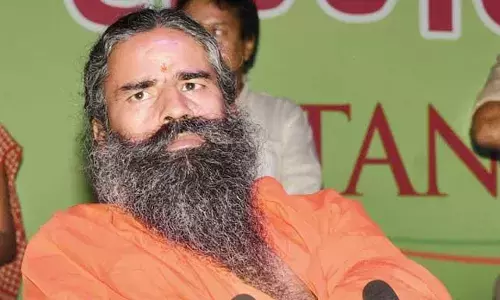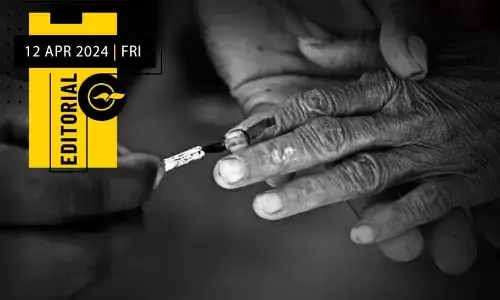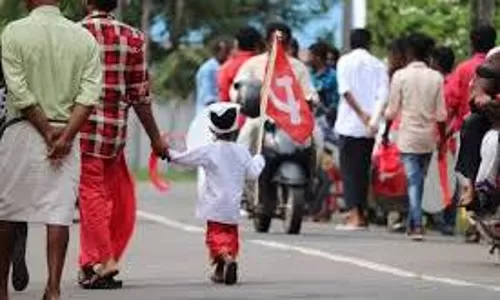
The caste of Hima - and of the President
text_fieldsIn ‘Annihilation of Caste’, Dr B R Ambedkar describes an incident that took place in Chakwara district in Rajasthan on April 1, 1936.
An avarna believer who returned after gallivanting prepared a feast for other avarnas in his place as part of the rituals. He welcomed the residents by arranging various scrumptious delicacies including ghee. While the people were having the food, hundreds of elites armed with bludgeons rushed to the spot and attacked them. The hapless residents ran for their lives leaving their food midway. What provoked them was the serving of ‘luxurious dish’ of ghee along with the food. The ‘crime’ charged on those hapless innocents was they violated an unwritten law that delicacies such as ghee could be used only by those belonging to the top rung of the society. After narrating this incident, Ambedkar observed that through the use of bludgeons, the elite class sent a message that even if anyone had the financial capability to buy ghee, such extravagance should be avoided seeing it as a defiance against the elites. He described the incident to prove that the avarnas will remain avarnas even if they achieve economic and political progress as long as they do not eliminate the demon called casteism.
Even after eight decades, the ‘Chakwara incident’ is repeating in different forms even today. The demon of casteism has greatly tightened its grip over the Indian society. Instances abound before us of the fact that the nation has not yet become free even from the ritual-bound casteist beliefs. In the case of some temples in Karnataka, the court had to directly intervene to put an end, though partially, to Made Made Snana, a practice in which devotees belonging to the lower castes roll over banana leaves on which food had been served earlier to the Brahmins. Modern human society has eliminated many such practices through legislation by dubbing them uncivilized. Also, the attempts to bring those belonging to the lower rung of the society to the mainstream through caste reservation, have succeeded to an extent, albeit with drawbacks. Still, many social scenarios show that no significant change has taken place in the mindset of the society related to caste.
The unpleasant experience suffered by President Ram Nath Kovind and his wife Savita during a visit to the Puri Jagannath temple in Odisha cannot be dismissed as a mere security breach. On March 18, the priests stopped the President and his wife who reached the temple. It should be particularly noted that the Rashtrapati Bhavan refused to even file a complaint in the matter other than giving a letter informing displeasure. And the unpleasant experience suffered by the country’s first citizen was only referred to the usual inquiry procedures. In other words, even the country’s first citizen has to bow down before the rituals rooted in caste system. In short, it is not the positions served or the services rendered to the society but the caste into which one is born, that forms the criterion for social status even today.
Even the Malayali soil, although ploughed in plenty by social renaissance movements right from early 20th century, is not free from the stench of casteism. During the election, political parties paying a visit to the offices of caste organizations have become a routine campaign program. And hence most of the times, the elected governments have had to succumb to the pressures of such casteist forces. Implementing reservation for economically backward people from forward communities in Travancore Devaswom Board by throwing even the basic principles of communal reservation to the winds, is an outcome if this casteist pressure. Although the appointment of non-Brahmin priests, much touted by the Left government, may at the face of it look progressive, several sociologist researchers have viewed it as a gimmick of 'Brahminising' lower castes. Casteism exists in the minds of Keralites as well. The incident which took place a few years ago in which a room occupied by a top Dalit official was cleansed using cowdung after he retired from his position, must not be forgotten. And now, Keralites are busy searching for the caste of the athlete Hima Das who did the country proud.
At the Under-20 World Championship last week in Finland, Hima Das had won gold in the 400 meters event - the first time for an Indian to make this achievement. Ever since Hima's gold achievement became news, what people looked up in search engines like Google was her caste. And as per Google Analytics report, the largest section that enquired about her caste was from Kerala, followed by Bengal. Also, two years ago when India's PV Sindhu won the silver in badminton singles at the Rio Olympics, Malayalis were first searching to see her caste. If it transpires that the height of achievements of Hima and Sindhu, by their own sheer hard work, are celebrated based on their caste that tells we are still entrenched in Chakwara of 80 years ago. With such a mind-set how can we move forward?























